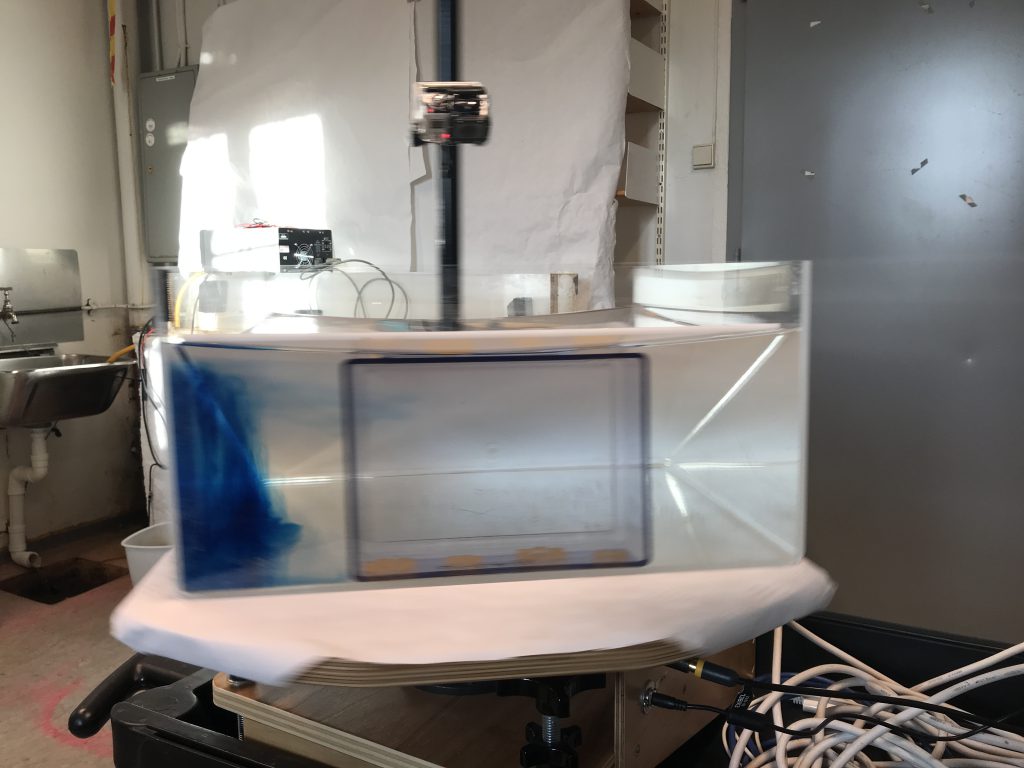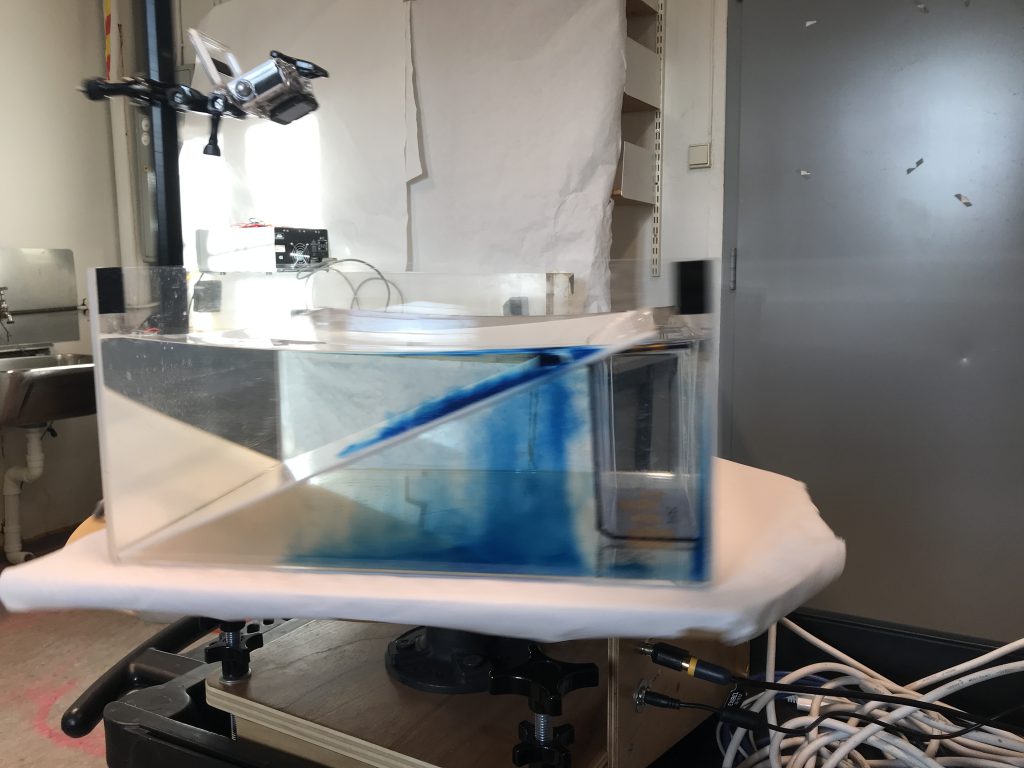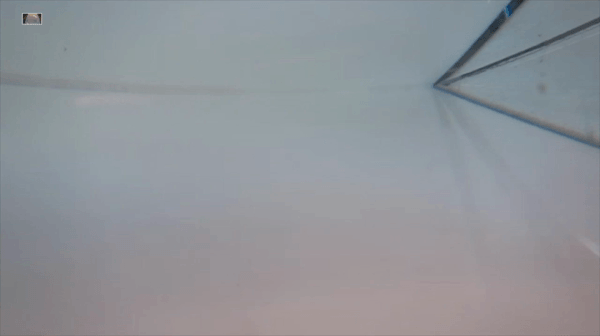What I find really fascinating about the planetary Rossby wave experiment is to look from the side and see the columns develop and move around the tank.
Here is a side-view camera plus the top view, both cameras rotating with the tank. The movie is sped up 20x so in about 22 seconds, you will have a good idea of what happens:
And here is the same movie in real time. Here you can really beautifully watch the plumes of dense water sinking to the bottom while the whole column is rotating.
One thing to avoid when running this experiment: Don’t put the ice cube too close to the side of the tank, otherwise it will get stuck there. I don’t know if it was surface tension keeping it so close to the wall or if, since it couldn’t rotate, it decided not to move at all, but in any case: If the ice cube is too close to the wall, it will get stuck. In our case, the dense water then sank down in the small gap between the sloped bottom and the wall of the tank (as you see in the picture below, which is looking under the sloping bottom towards the deep end of the tank).

You still see columns forming underneath the sloping bottom, but that wasn’t quite what we were aiming to do…


Pingback: Blackboard 2.0 – Science in a bucket! | Teaching Ocean Science
Pingback: Blackboard 2.0 – Science in a bucket! - Animal's Life